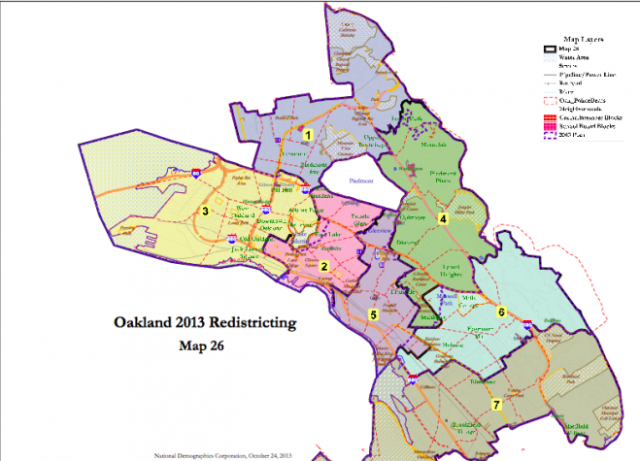
by Barbara Grady, Oakland Local
After months of public discussion on how Oakland’s voting districts might be changed and with 50 proposed maps to consider, the Oakland City Council voted nearly unanimously Tuesday night to tentatively approve a single map that encapsulates many opinions.
Map #26, pictured above, was submitted only four days earlier, October 25, by Council Member Lynette Gibson McElhaney, but it includes ideas represented in many of the 50 maps put forth by residents, other Council members and experts — particularly to keep distinct neighborhoods together rather than splitting them into two or more districts — as the city went through its once-in-a-decade redistricting process.
The chief changes in Map #26 from current districts are to combine the Maxwell Park neighborhood into one district, District 6, and to switch the Cleveland Heights neighborhood east of Lake Merritt into the same district as its adjacent neighborhoods, District 2, according to McElhaney. (Before, Cleveland Heights was an outlier combined with neighborhoods to the west of Lake Merritt in District 3.) These wishes were represented in three earlier maps the Council considered, which in turn represented common opinions, as described by the city here.
But it also keeps the Adams Point neighborhood intact, in District 3, defeating proposals to split it up, after the Adams Point Neighborhood Association sent a letter to the Council asking that the neighborhood be kept together in its current district, McElhaney said. Map #26 also keeps the Glen Echo / Richmond Boulevard neighborhood in one district.
The Council voted 6 to 1, with Council member Desley Brooks (District 6) objecting, to make the new district boundaries reflect this map, pending the outcome public hearings. Council member Larry Reid (District 7) was absent and did not vote.